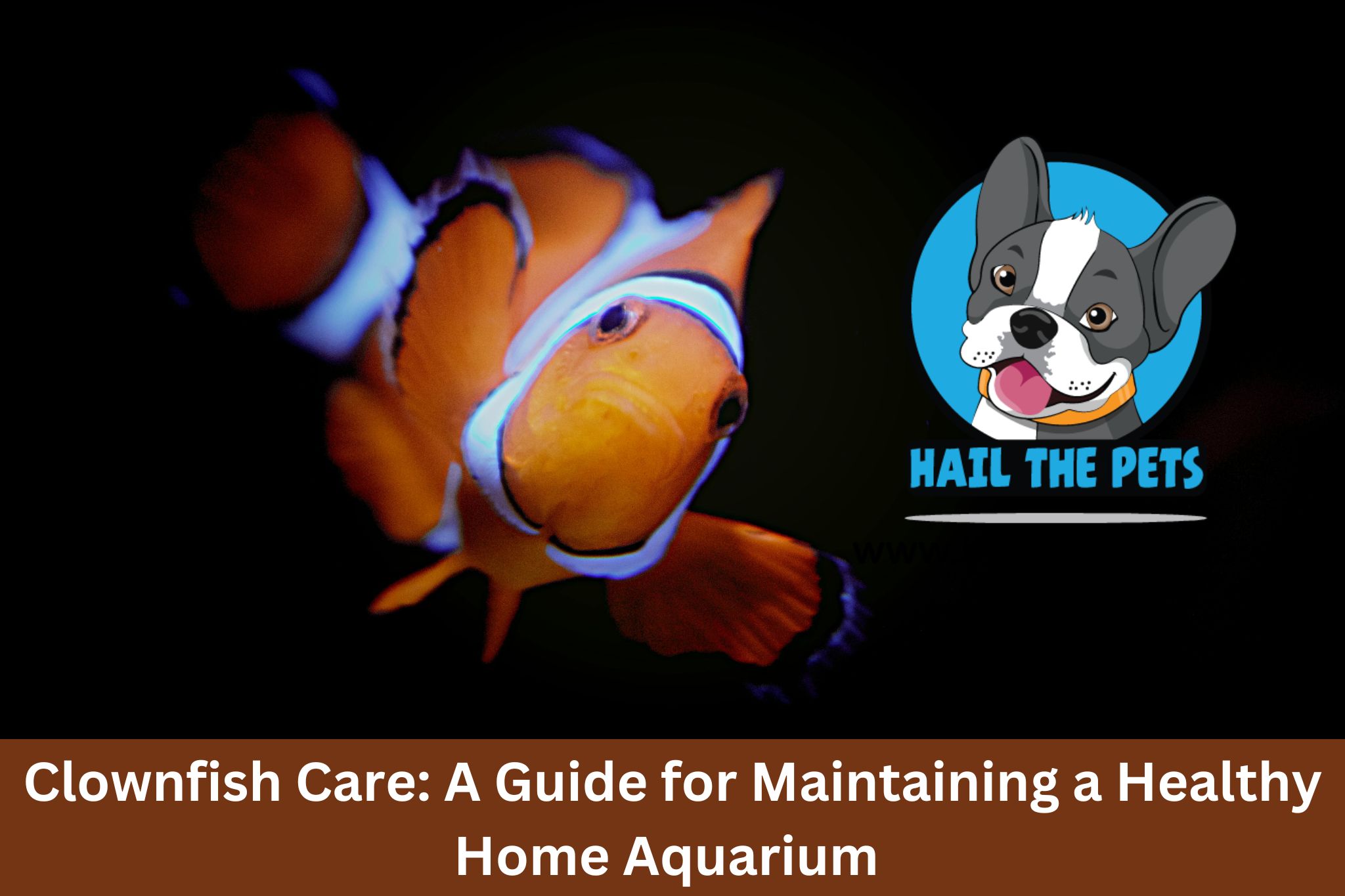Clownfish are some of the most popular aquarium fish in the world. Their bright colors, unique personality, and funny antics can brighten up anyone’s day.
Ever since the release of the Oscar award-winning animated film “Finding Nemo”, demand for Clownfish has never been higher. With a little research and planning you can provide the proper environment to keep your Clownfish happy and healthy for many years.
This complete guide will cover everything you need to know to get started today.
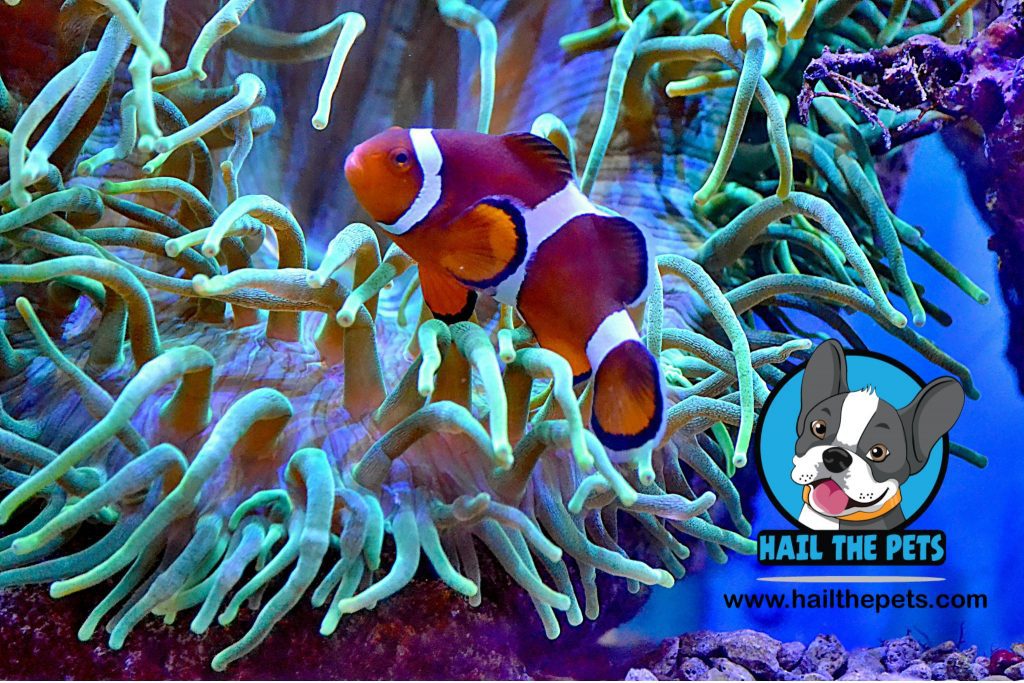
Meet the Clownfish: Nature’s Little Comedians
Clownfish also goes by the name of anemonefish, belonging to the family of Pomacentridae. With about 30 species of clownfish, each flaunting unique color patterns and markings, these fish are as diverse as they are delightful.
They are best known for their bright orange bodies with distinctive white bands. These little creatures hail from the shallow and warm waters of the Pacific Ocean, Indian Ocean, and Red Sea, as well as around Australia’s Great Barrier Reef.
Read more: Clownfish characteristics
Types of Clownfish
Choosing the right clownfish for your home aquarium can be difficult. You would want to pick all of them due to their fun tactics and beautiful color patterns. So, if you decide to choose one as per your liking, here are a few popular types to consider:
Ocellaris Clownfish (Amphiprion ocellaris): Often mistaken for the Percula clownfish, these orange beauties with white stripes are the most common in-home aquariums.
Maroon Clownfish (Premnas biaculeatus): Known for their striking red color and larger size, these fish make a bold statement.
Read more about: Understanding The Habitat and Habits of Carp Fish: Exploring Their Role in Aquatic Ecosystem
Tomato Clownfish (Amphiprion frenatus): With a deep red or orange body and a single white stripe near the head, these fish are as spicy as their name suggests.
Skunk Clownfish (Amphiprion akallopisos): These fish sport a white stripe running along their back, reminiscent of a skunk’s stripe.
Clarkii Clownfish (Amphiprion clarkii): Notable for their black, white, and yellow bands, these fish bring a touch of elegance to any tank.
Each species has its care requirements, so it’s important to choose one that suits your aquarium setup and experience level.
Read more: The Ultimate Guide to White Seabass Fish: Exploring their Habitat, Types, Nutrition, and Care
Clownfish Size and Weight
When it comes to clownfish, their size and weight are as charming as their personalities. These little marvels of the marine world may be small, but they bring a big presence to any aquarium.
Clownfish Size
Most species of clownfish grow up to approximately 3-4 inches, perfect for home aquariums. One of the species preferred is the Ocellaris clownfish, which grows to approximately 3 inches.
The Maroon clownfish can be a little larger, growing up to 6 inches. Their small size means they don’t need huge tanks, but they do need enough space to swim around and enjoy themselves.
Clownfish Weight
Apart from this very small stature, there is a healthy weight range that adds to the robust nature of these fish. Most species usually weigh from 0.5 up to 1.5 ounces, depending on the species and diet.
It may sound light, but for small marine animals, this is quite big. Their weight therefore ensures they have enough mass to swim efficiently and interact with their environment actively.
Know more about: Ten Deadly Fish Diseases: Tips And Tricks To Prevent Them
Clownfish Color
One of nature’s best artworks is seen in Clownfish; they all carry vibrant coloration. The famous, Finding Nemo fish, Ocellaris clownfish, is famous for its bright orange body with white bands.
Black Clownfish shows a unique black body with white bands. It has been discovered that the diet, lighting, and overall health of clownfish are critical to maintaining the intensity of their colors. Thus, it is advised to keep them in optimal conditions to enjoy their best looks.
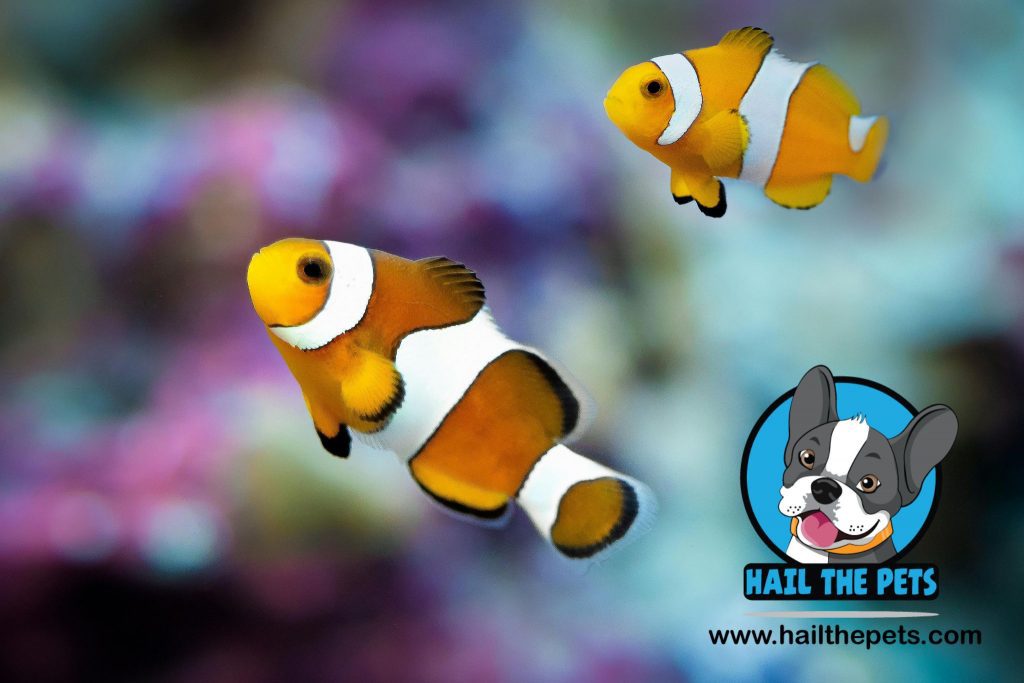
Setting-up Your Clownfish Tank
Before bringing your baby clownfish home, you’ll have to set up an environment where they can thrive. Here are the steps to create a perfect home for your aquatic friends.
Tank and Equipment
A recommended tank size for a pair of clownfish is 20 gallons, but bigger is always better. A larger tank offers more space for exploring, swimming, and establishing territories. You’ll need the following equipment to set up the tank:
- Filter: Keep the water clean and free of harmful toxins.
- Heater: Maintain a stable temperature between 75-82°F (24-28°C), crucial for clownfish health.
- Lighting: Highlights the vibrant colors of your clownfish and supports the growth of live plants or anemones.
- Protein Skimmer: Removes organic waste from the water, enhancing water quality.
- Water Test Kits: Regularly check pH, ammonia, nitrite, and nitrate levels to ensure a healthy environment.
Water Quality
Good water quality is the key to the healthy survival of your clownfish. Regularly check and adjust the pH (8.1-8.4), salinity (specific gravity 1.020-1.025), and temperature. Partial (10-20%) water changes every two weeks will help keep the water clean and pH balanced.
Tank Decorations: Building Comfortable Habitat for Clownfish
In the wild, clownfish hang out around the reefs, darting in and out of anemones. If you’re setting up an aquarium to mimic their natural habitat, it’s a good idea to include live rock and coral.
While they can do just fine without anemones, having one can make their lives more interesting and give you a chance to observe some fascinating interactions. These cool little fish have mutualistic relationships with four different species of anemones, so make sure you pick a compatible one for your tank.
Here are four species of anemones that form mutualistic relationships with clownfish:
- Heteractis magnifica (Magnificent Sea Anemone)
- Stichodactyla gigantea (Giant Carpet Anemone)
- Stichodactyla mertensii (Mertens’ Carpet Sea Anemone)
- Entacmaea quadricolor (Bubble Tip Anemone)
These anemones provide shelter for clownfish, which in turn help keep the anemones clean and feed them.
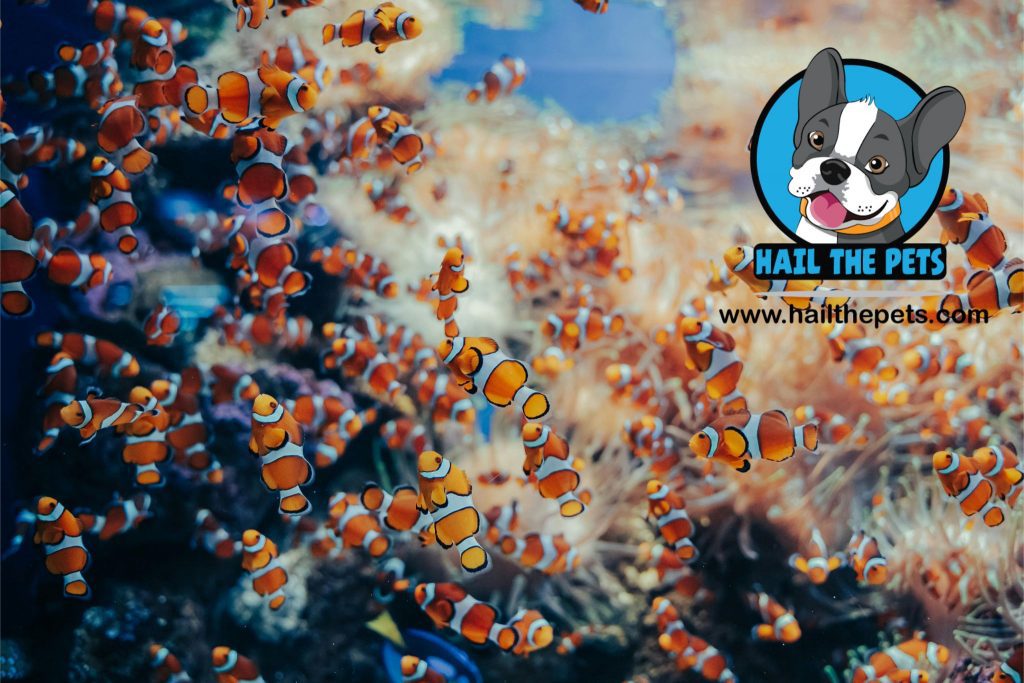
What Do Clownfish Eat?
Clownfish living in the wild are omnivores; they enjoy a mix of algae, plankton, and other small crustaceans. The clownfish diet should include the following:
- Pellets and Flakes: Get them some high-quality commercial marine fish food.
- Frozen and Live Foods: Treat them to brine shrimp, mysis shrimp, and finely chopped seafood.
- Vegetables: Every now and then, offer them some blanched spinach or seaweed to boost their diet.
Feed your clownfish small amounts twice a day, making sure they finish eating everything within a few minutes. This way, you’ll avoid overfeeding and keep the water in the tank clean and healthy.
How Do Clownfish Reproduce?
Clownfish are known for their unique breeding behavior. They are protandrous hermaphrodites, meaning they can change sex from male to female. Typically, the dominant fish in a pair becomes the female, while the smaller, subordinate fish remains male.
Here are the breeding stages of clownfish.
- Spawning: The female lays hundreds of clownfish eggs on a flat surface near their host anemone or chosen site. The eggs are orange and stick to the surface.
- Incubation: The male guards and cares for the eggs, which hatch in about 6-10 days, depending on the water temperature.
- Raising Fry: Once the clownfish eggs hatch, the tiny larvae are very delicate. They require separate rearing tanks with gentle aeration and a diet of rotifers, eventually transitioning to baby brine shrimp.
Clownfish Lifespan
With proper care, clownfish can live for many years. In captivity, they typically live between 5 to 10 years, though some have been known to live even longer.
Check out: Understanding Fish Nutrition: How to meet the Healthy Dietary Needs of Different Fish Breeds
Clownfish Price
The cost of clownfish varies depending on the species, color morph, and availability. Here’s a quick guide on clownfish prices:
- Ocellaris Clownfish: $15-$30
- Black Ocellaris Clownfish: $25-$50
- Maroon Clownfish: $20-$40
- Designer Clownfish: $50-$100 or more
Choose reputable breeders or aquarium shops when buying clownfish. Look for active, brightly colored fish with no signs of disease or stress.
Common Clownfish Health Issues
Though clownfish are generally hardy, they can still be susceptible to certain diseases including the following.
- Marine Ich (Cryptocaryon irritans): A parasitic infection that causes white spots on the fish’s body and fins. Treat with copper-based medications.
- Brooklynella (Clownfish Disease): A parasitic disease causing lethargy, loss of color, and mucus buildup. Formalin baths can be effective.
- Fin Rot: Bacterial infection leading to ragged and decaying fins. Improved water quality and antibacterial treatments can help.
Read more about: Breeding Fish: A Beginner Guide to Understanding Fish Reproduction
Tips for Keeping Clownfish Healthy
- Regularly test water parameters and perform water changes to keep the environment clean and stable.
- Offer a varied diet to ensure your clownfish receives all the necessary nutrients.
- To reduce stress and agitation, keep the tank population within recommended limits.
- Regularly check your clownfish for signs of disease, such as abnormal swimming behavior, loss of appetite, or visible parasites.
- Before introducing new fish or invertebrates to your tank, quarantine them for at least two weeks to prevent the spread of disease.
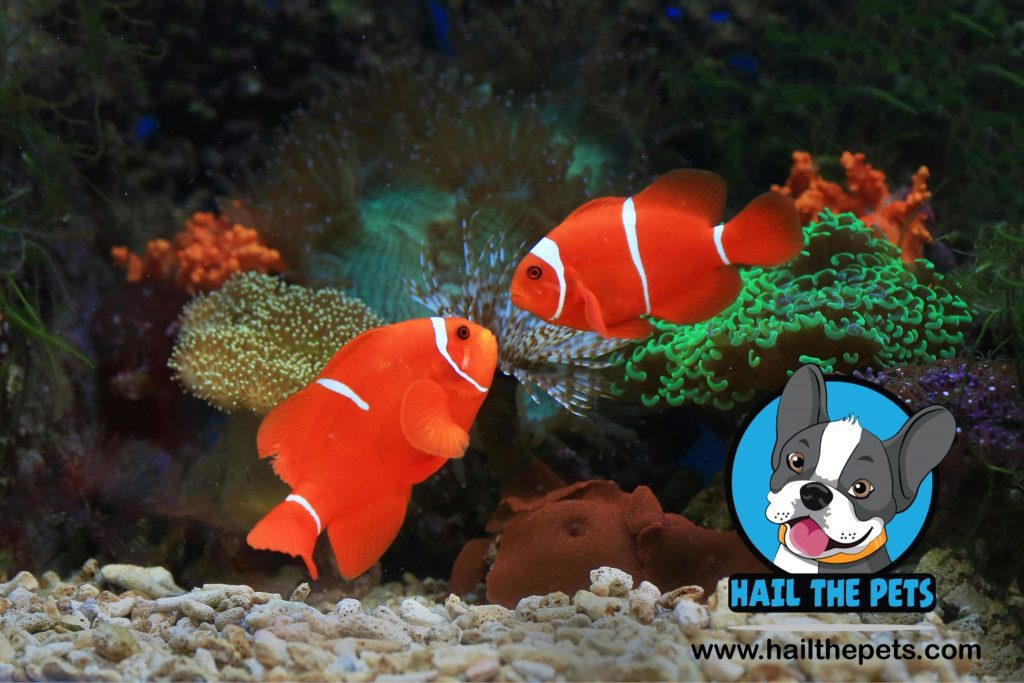
The Final Word
The clownfish are anything but vibrant little fish; they are an endless joy and fascination element to any home aquarium. With their bright colors, quirky personalities, and playful antics, these marine animals could turn any tank into a lively underwater scene.
This will keep your clownfish healthy and happy as it creates the right environment and diet for them. All these charming fish would offer is years of entertainment and beauty for a little work and attention.
